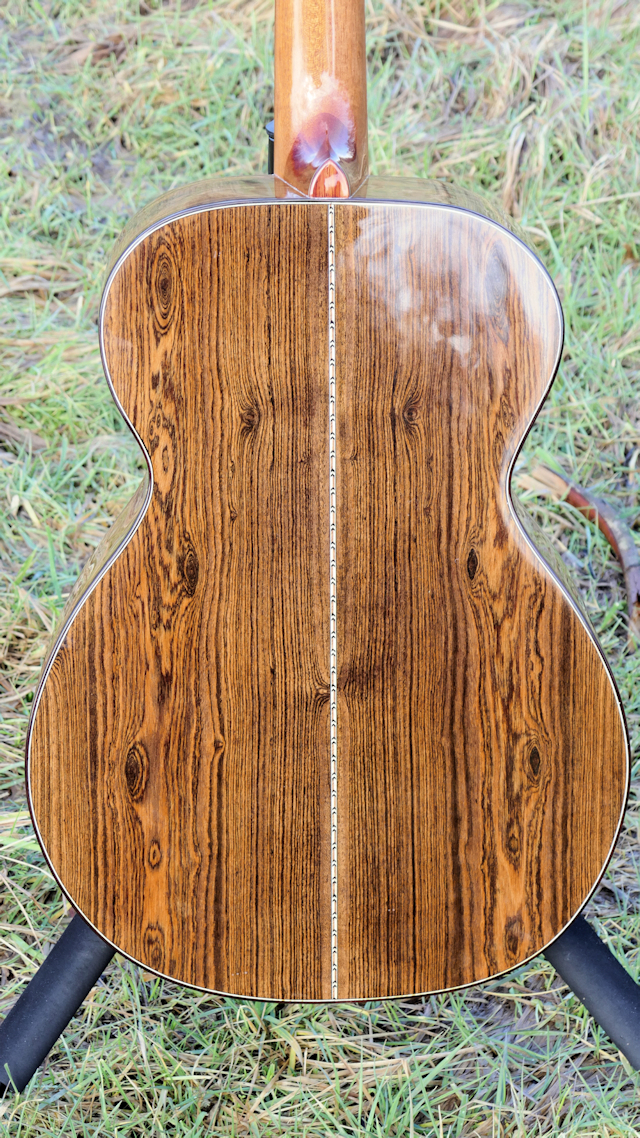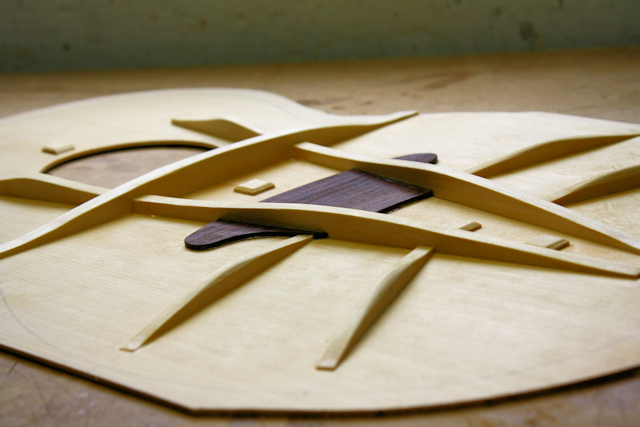Bocote OM, V-Class bracing, fan fretted. Soundclip.
Posted: Sun Feb 24, 2019 11:31 am
No. 27. A mixture of a classic mid-sized steel string and a modern V-Class bracing and a fanned fret fingerboard.
Some of you were reserved to build with the "new" Taylor V-Class braced top. So I made this one with a fan-fretted fingerboard. Very easy to build. Few braces and a scary light build upper part of the soundboard. It is strung now for 2 weeks. At first it sounded very compressed, but it it opening very nice now.
Your question probably is: How does it sound?
Well, not so very different from X-braced one. If I was introduced to this guitar, and not knowing what bracing it has, I would not be able to tell.
An advantage of this design is that the area below the bridge is well supported. So it has no tendency to rise, as it does in my other guitars. In long term it will benifit the initial setup.
Downside for me is this guitar has a quite mid-oriented sound. Upside is that it is powerful and surprisingly good while strumming.
Listen to the first clip and hear how my customer makes it sound in an improvisation.
The latter is mine, trying to make it sound decent.
(The strumming clip got lost)
Sound 1
Sound 2
Top-Old growth bearclaw German Spruce
Bracing-Taylor style V-Class German Spruce
Bridgeplate-East Indian Rosewood
Back/Sides-Bocote
Neck-Honduran Mahogany
Scales-High E: 630 - Low E: 640 mm
Fingerboard-FSC Padouk, 16" radius
Bridge-FSC Padouk, pinless and split saddle
Headstock Plate-FSC Padouk
Tuners-Gotoh 381
Glue-Fish Glue
Finish-Nitrocellulose






Some of you were reserved to build with the "new" Taylor V-Class braced top. So I made this one with a fan-fretted fingerboard. Very easy to build. Few braces and a scary light build upper part of the soundboard. It is strung now for 2 weeks. At first it sounded very compressed, but it it opening very nice now.
Your question probably is: How does it sound?
Well, not so very different from X-braced one. If I was introduced to this guitar, and not knowing what bracing it has, I would not be able to tell.
An advantage of this design is that the area below the bridge is well supported. So it has no tendency to rise, as it does in my other guitars. In long term it will benifit the initial setup.
Downside for me is this guitar has a quite mid-oriented sound. Upside is that it is powerful and surprisingly good while strumming.
Listen to the first clip and hear how my customer makes it sound in an improvisation.
The latter is mine, trying to make it sound decent.
(The strumming clip got lost)
Sound 1
Sound 2
Top-Old growth bearclaw German Spruce
Bracing-Taylor style V-Class German Spruce
Bridgeplate-East Indian Rosewood
Back/Sides-Bocote
Neck-Honduran Mahogany
Scales-High E: 630 - Low E: 640 mm
Fingerboard-FSC Padouk, 16" radius
Bridge-FSC Padouk, pinless and split saddle
Headstock Plate-FSC Padouk
Tuners-Gotoh 381
Glue-Fish Glue
Finish-Nitrocellulose





